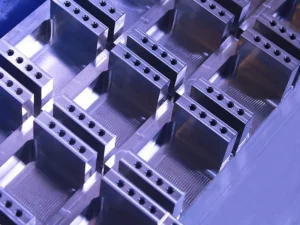
Can a robotic arm perform CNC machining operations?
Can a Robotic Arm Perform CNC Machining Operations?
In the world of manufacturing, CNC machining has long been the go-to method for precision and efficiency.
But with the rise of automation and robotics, many engineers are beginning to wonder: can a robotic arm perform CNC machining operations with the same level of accuracy and reliability as a traditional CNC machine?
Basics of CNC Machining
CNC machining, or computer numerical control machining, is a method of manufacturing that uses pre-programmed computer software to control the movement of machine tools and equipment.
This allows for highly precise and complex cuts and shapes to be made with ease, making it an essential process in industries ranging from aerospace to automotive.
Traditional CNC machines consist of a stationary workpiece and a cutting tool that moves along multiple axes to create the desired shape.
These machines are operated by skilled machinists who are trained to set up the machine, input the necessary code, and monitor the process to ensure everything runs smoothly.

Introducing Robotic Arms
Robotic arms, on the other hand, are versatile machines that are capable of performing a wide range of tasks, from assembly to welding to painting.
These machines are equipped with multiple axes of movement and are programmed to perform specific tasks with precision and speed.
One of the key advantages of robotic arms is their ability to adapt to different tasks quickly and easily.
By changing the end effector or tool attached to the arm, a robotic arm can be used for a variety of applications without the need for extensive reprogramming or retooling.
The Advantages of Using a Robotic Arm for CNC Machining
While traditional CNC machines have long been the standard for machining operations, robotic arms offer several advantages that make them an attractive alternative.
Some of the key benefits of using a robotic arm for CNC machining include:
1. Flexibility: Robotic arms can be easily reprogrammed and reconfigured to perform different machining operations, making them ideal for small-batch or custom manufacturing.
2. Cost-Effectiveness: Robotic arms are often more cost-effective than traditional CNC machines, making them a more accessible option for small to medium-sized manufacturers.
3. Space Efficiency: Robotic arms have a smaller footprint than traditional CNC machines, allowing manufacturers to make better use of their available space.
4. Adaptability: Robotic arms can be equipped with multiple end effectors, allowing them to perform a variety of tasks beyond just machining operations.
The Challenges of Using Robotic Arms for CNC Machining
While robotic arms offer several advantages for CNC machining operations, they also come with their own set of challenges. Some of the key challenges of using robotic arms for CNC machining include:
1. Programming Complexity: Programming a robotic arm to perform precise machining operations can be complex and time-consuming, requiring a high level of expertise.
2. Accuracy and Precision: Robotic arms may not always offer the same level of accuracy and precision as traditional CNC machines, especially for complex or highly detailed parts.
3. Maintenance and Calibration: Robotic arms require regular maintenance and calibration to ensure they remain in optimal working condition, which can add to the overall cost and complexity of using these machines.
Conclusion
While the idea of using a robotic arm for CNC machining operations may seem appealing, it’s important to carefully consider the advantages and challenges associated with this approach.
Robotic arms offer flexibility, cost-effectiveness, space efficiency, and adaptability, but they also come with programming complexity, accuracy concerns, and maintenance requirements.
Ultimately, the decision to use a robotic arm for CNC machining will depend on the specific needs and constraints of a manufacturing operation.
By weighing the pros and cons carefully and considering factors such as budget, space, and expertise, engineers can determine whether a robotic arm is the right choice for their CNC machining needs.




1 thought on “Can a robotic arm perform CNC machining operations?”
I’ll be back for more posts like this.